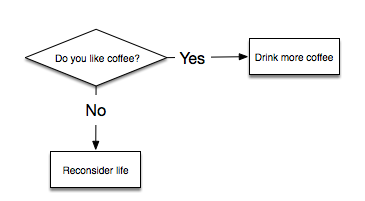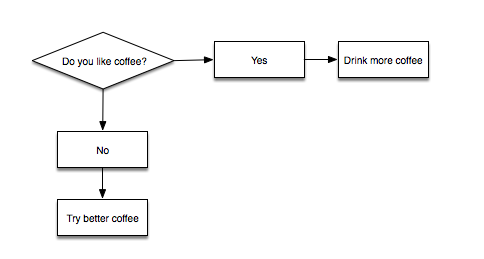I’ve been through two tries at implementing dual-track agile, and I’d like to offer some perspective on the travails, the pros, the cons, and offer some advice to those who might attempt it.
What’s dual-track agile?
In short — you pull a product manager, a designer, and a developer with broad knowledge of the area you’re working in forward in the process, taking on scouting and evaluating work, which then drops into the backlog of whatever agile methodology you’re using.
This is intended to solve the problems of how you develop the stories that a team will work on — the design sprint, the reset sprint, the investigation card, or in carving capacity for those tasks out of the team’s capacity — which in themselves often provoke both a set of methodology challenges and a level of bikeshed argumentation about methodology that can be immensely draining.
Here’s Marty Cagan on this in 2012
And here’s this good Mind the Product article
Which includes this good gif:
Implementation one: everyone jump into the pool at once
At Simple, we’d been through a couple of massive crash re-platformings that hadn’t delivered new features to customers. We two product teams (one, mine, working on what would become Shared Accounts, and another working on long-neglected customer service features, so we were going after things that would create value for our customers, but we were still not shipping.
We brought in Silicon Valley Product Group to do an assessment and recommendation. One of their number came in, did interviews with key stakeholders, and then in a day-long session in which almost everyone was present (we had our recruiters there!), told us what they’d seen as problems and offered a set of prescriptions. The biggest and most systemic one was to go to dual track agile.
Our leadership then declared we’d adopt dual-track agile, and so it was.
It didn’t take. We adopted dual track in name, but in practice, we couldn’t get the developers with the required knowledge to participate, and so discovery withered. Ours could not move into doing that work, being continually pulled into on-call, supporting retiring the deep technical debt, and doing the architecture work that would keep a team working.
Without developer participation, the discovery track could evaluate whether work was valuable to the end user, and whether that value could be realized by customers, but it still meant that items about to go to the team did not have a ROI, because we still needed to figure out the I. And in turn, that meant that there still needed to be an additional step in what should be the “delivery” track to do even high level development investigation.
What could we have done?
- no methodology exists in a vacuum — consider the people and teams that will be doing the work. The people may be willing, but if circumstance can’t permit, you’re set up to fail
- if there are changes you can make that would allow you to use a methodology, you have to make the changes or wait — don’t do the reorg or change your approach and just hope
- a top-down mass implementation wasn’t the way to go — ever the pragmatist, I’d have rather found a team where it was a particularly good fit, done it there, and then learned lessons that could spread. When we started doing Scrum on teams at Expedia, we got approval to try it in three teams with good conditions and very different problems (flight search, hotels, and packages) and were able to learn from each other and measure our success against other teams and spread the good word.
Two: easing into it
As Lead Product Manager at Manifold, I was able to drive methodology. I decided to follow my own advice and do it real subtle-like. We started to use Product Pad, doing more and more discovery activities… and my intention was to use more and more of the process until we’d be using dual-track across the teams without having to talk about it.
During this time, my boss, the VP of Eng, encouraged me to just do it! We’re small, you can do a lunch-and-learn and just go!
I, having been burned by the previous experience, and encouraged by success at gradual adoption of Scrum at Expedia, declined and decided to go ahead with moving forward. Let this be a lesson to us all:
- If you have the opportunity to jump ahead, and the support to do so, maybe just do it
Dual-track took… kind of. Unfortunately for dual-track, the company made a hard business pivot and organized around long-term contractual obligations (so product teams organized around delivering promised functionality, rather than pursuing objectives of their own). There’s a little bit of work to be done within that, but you’re not going out to do basic user research, address problems, etc.
Fundamentally, dual-track exists to support testing ideas, learning, and exploration. If you’re not doing that as a business, don’t adopt a framework that supports it. It’s like the difference between the road-trip and doing a regular commute. One requires research, planning, friends, snacks, a good dog to hang out the window if you’re lucky, and the other requires you to figure out the vehicle and route once and then pay attention.
I also encountered more resistance in the form of nearly-endless tool and process questioning than I’d expected or was prepared for. I found myself answering questions like “What we do when robosaurs attack local food distribution centers is a good question, and we’d have to talk about what that would mean for ticket handling…””
Now, what was going on? There were two culture clashes with Manifold’s stated values of transparency and autonomy, where anyone should be able to do anything as long as there was an audit log and the action was reversible.
1: dual-track itself seemed to clash with culture: that there would be three people who, outside of a product team’s normal activities, would be making decisions on the direction of the team and what work there was to be done.
2: tooling: first, introducing another tool for people to use raised the “why not just do all this in (JIRA/github/___)?” and in particular, the tool I’d introduced, Product Pad, is great for a lot of things but has a ton of restrictions on roles (for instance, a normal user can’t go add stories to an idea filed by someone else) that rankled people. I had not done enough to consider this.
What happened?
We started, ideas and feedback go into the hopper, there are processes to do discovery, and it’s being used on some more-nebulous pieces to create a roadmap.
I feel like I should have abandoned it when we made our pivot — I should have considered that a change in direction and how we work as a company was worth wiping the white board clean and evaluating the process challenges against what the kind of work we’d be doing over the next 12-18 months.
Questions to ask and things to do as you weigh dual-track.
First, think about this:
- What’s your elevator pitch for why the change is worth it — what will you gain, or what known harms would it have prevented?
- What’s that pitch for each of the stakeholders in the process? What’s your pitch to your Marketing partners, for instance?
- Who’s your champion at the exec level?
- Consider the culture: will people react poorly to the appearance of a trio of people taking over the direction of the team where once it seemed open to all? What can you do in designing the process and communication to address those concerns?
And then, block out your calendar for a long time so you can concentrate, and
- Map out the process from end-to-end before any public rollout or discussion.
How will an idea or customer request go through the process? What tools will be used? Consider the maximally complex cases —
- A developer has an idea
- We write up the idea — where? How is it tracked?
- How do you decide that that idea is worth investigating out of all the other ideas? Who makes that decision? Where?
- We need to do some user research on the idea — who does it? Where is that request tracked? How does the result get tracked?
- We need to show a prototype to users, and it requires both design and a little bit of dev. How do you start and track that work? How do you record the work?
- You now know that the idea has merit and can be made usable. How do you track that?
- How do you cost out the work? How is that work assigned, and tracked?
- How do you choose what goes onto the roadmap from all of the ideas that have cost/benefit ratings? How?
- If you’re doing regular user research or usability testing, how will that fit? Where will those results go?
- How will you communicate each decision out to everyone who is interested in the results?
Then for each person in the process, list how many tools they must use including any new ones, and how they’ll track their work at each stage. If they live in a world of GH issues and you now require them to put their head into Product Pad regularly, or participate in discussions there, you’re adding complexity into their life and they’ll have to see a lot of value come out of this extra effort — which may fall to you as a product manager.
Now you’ve got a rollout plan, of sorts, with an idea of the cost and what will need to happen for the process to be a success, and you can make an informed decision.
In summary, dual-track agile is a methodology of contrasts
Having been through two attempts to implement it, I’m much more likely to look at existing processes and find ways to build in things like regular user testing and fast feedback loops, and see if they improve things — or start to create the need for dedicated discovery process and activities.
I would love to hear other people’s success or failure stories implementing dual-track agile (or any of the latest hot methodologies) — please, drop me a line if you’ve got them.





